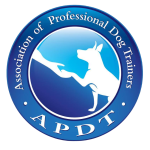Vaccination Schedule at 8 Weeks Age
Required Vaccination at 8 Weeks old
1. Combination
(Distemper, Hepatitis, Leptospirosis, Parainfluenza, Parvovirus, Coronavirus)
2. Bordetella
(Kennel Cough)
*Above Information Provided by BC SPCA. Please always consult with your veterinarian on any
side effects as every dog’s health condition varies.
Vaccination Schedule at 12 Weeks Age
Required Vaccination at 12 Weeks old
1. Combination
(Distemper, Hepatitis, Leptospirosis, Parainfluenza, Parvovirus, Coronavirus)
2. Rabies (if Needed)
*Above Information Provided by BC SPCA. Please always consult with your veterinarian on any
side effects as every dog’s health condition varies.
Vaccination Schedule: at 16 Weeks Age
Required Vaccination at 16 Weeks old
1. Combination
(Distemper, Hepatitis, Leptospirosis, Parainfluenza, Parvovirus, Coronavirus)
2. Rabies (if Needed)
*Above Information Provided by BC SPCA. Please always consult with your veterinarian on any
side effects as every dog’s health condition varies.
Vaccination Schedule: Annual Booster Shots
When Should I take the Booster Shots Again?
Combination
(Distemper, Hepatitis, Leptospirosis, Parainfluenza, Parvovirus, Coronavirus)
Should Repeat once every year
Bordetella
(Kennel Cough)
Should repeat once every year
Rabies (if needed)
Booster Should be taken at one year old, then should repeat once every three years after
*Above Information Provided by BC SPCA. Please always consult with your veterinarian on any
side effects as every dog’s health condition varies.
Vaccination Schedule: Other Single Vaccination
Other Vaccinations that might help to protect your Dog
You may or may not need to take below Vaccination, please always consult with your veterinary!!
Distemper-Measles-Parainfluenze
Parvovirus
Coronavirus
Borrelia (Lymevax)
*Above Information Provided by BC SPCA. Please always consult with your veterinarian on any
side effects as every dog’s health condition varies.
What Should I do if my dog gets hit by a car
What Should I do if my dog gets hit by a car
Symptoms
Dragging, limping or paralysis of limbs. Open wounds of skin or flesh. Raw areas where tissue
and hair has been rubbed off on pavement. Grease, oil or dirt in wounds or fur. Internal
tenderness, severe head injuries. Shock.
Emergency Handling – What to Do
Keep pet quiet, but protect yourself from bites or scratches. Stop any bleeding if possible.
Support broken bones with a blanket or board. Keep pet warm. Transport immediately to vet for
examination. Act quickly but carefully!
Prevention
Do not let pets run free. Keep leashed or in the safety of your home or yard. Keep leashed
whenever walking on or near any traffic. Spay or neuter your pet to prevent “wanderlust”.
*Above Information Provided by BC SPCA
Bee Sting
My Dog got Stung by a Bee
Symptoms
Areas of hot swelling, especially on face or muzzle. Animal attempts to “scratch away” pain.
Stings in mouth – excessive drooling, redness or soreness.
Emergency Handling – What to do
Apply mouth tie. Apply cold compress, warm compress if swelling is severe. If pet appears faint
or sting is on eye, nose or mouth area, consult with your vet immediately. Prevent excess water
consumption.
Prevention
Try to watch puppies when outside as they are more apt to chase bees and wasps. Be especially
careful when walking your pets in parks or wilderness areas where bee hives could be found.
*Above Information Provided by BC SPCA
Burns or Chemical Burns
Burns or Chemical Burns
Symptoms
Scorched hair or flesh. Burnt smell. Possibility of accidents involving stoves, hot oil, camp
fires, etc.
Emergency Handling – What to do
Chemical burns: Apply solution of one pint warm water and one tablespoon baking soda or wash
with milk of magnesium. Apply concentrated, cool tea. Take to vet.
Prevention
Keep chemical solutions safely stored away with caps and lids tightly sealed. Don’t leave
appliance cords hanging over the counter in your kitchen. Point pot handles towards the centre
of your stove. Keep pets leashed around campfires or barbecues.
*Above Information Provided by BC SPCA
Cuts, Tears, Punctures or Animal Bites
My Dog has an open wound
Symptoms
Tears in skin or flesh. Soft, fluid filled swelling. Often nothing can be seen except a little
draining on hair and you will feel a tender spot.
Emergency Handling – What to do
Fresh Bite Wounds: Apply restraint on animal. Check for severity by carefully clipping hair
around wound. Wash thoroughly with warm soapy water. Do not bandage, but allow to drain. If
wounds need stitches or show multiple deep punctures, take pet to vet.
Prevention
Do not let pets run free. Keep your pets out of fights with other animals. Keep all garbage,
garden tools, etc. in safe place. Don’t let your pet chase wild animals.
*Above Information Provided by BC SPCA
Diarrhea
My dog is having diarrhea
Symptoms
Frequent loose stool. Loss of control over bowel movement. Excessive thirst.
Emergency Handling – What to do
Stop all food & water for 12 hours. For the next 12 hours, feed small amounts of cooked rice or
hamburger at frequent intervals. Make sure all fat is drained off the hamburger. If diarrhea
persists or there is blood in stool, consult your vet.
Prevention
Prevent ingestion of spoiled foods, non-food items, garbage or toxic substances. Keep dog free
of intestinal worms. Reduce amounts of bulk in die. Avoid sudden changes in diet. Do not feed
cow’s milk or rich cream if pet is not used to it.
*Above Information Provided by BC SPCA
Ear Problem
My dog is having some ear issues
Symptoms
Excessive shaking of head. Scratching or pawing at ears. Red and inflamed ear canal. Foul
smelling liquid draining from ears. Dirty inner ear.
Emergency Handling – What to do
Accessible part of ear can be cleaned with moistened cotton wool wrapped on and held securely
with dressing forceps. Deeper cleaning should be done only be a vet. For any unusual problems,
see your vet.
Prevention
Examine inner ear frequently, especially with folded-eared dogs. Check for bugs, burrs, sticks,
etc. Scrub head & ears well when bathing. Don’t allow water to get in ears and keep free of dead
hair and wax. For long haired pets, keep fur groomed and matte free.
*Above Information Provided by BC SPCA
Eye Problem
My dog’s eyes are not feeling well
Symptoms
Squinting, rubbing or pawing at eyes, discharge from eyes, redness and watering of eye. Debris
in eye. Eye lids swollen shut.
Emergency Handling – What to do
Treatment of the eye should be done only at the advice and direction of your vet. Gently wash
affected area with a mild solution of salt water. Keep eye moist. Do not apply pads or bandages
prior to diagnosis. See your vet.
Prevention
Don’t let dog hold its head out of the car window or ride in back of vehicle. If injury is
apparent, restrain dog from pawing, scratching or rubbing eyes, even by constant holding if
necessary.
*Above Information Provided by BC SPCA
Heat Stroke
It’s a Hot Hot day….
Symptoms
Sudden collapse, muscle twitching, blank staring expression in eyes. Loss of control of tongue.
Deep heavy panting. If not promptly treated, death usually results.
Emergency Handling – What to do
First wet down the animal with cold water or immerse but the head in a cold water bath. Call
your vet immediately
Prevention
Do not confine your pet in a car, open or closed, during the summer. This is the cause of 90% of
all heat stroke. Your faithful friend will trot by your side until it drops! Control the outdoor
activities of a young, playful kitten or puppy during extremely hot weather. Always supply
sufficient shelter from the sun and plenty of clean, fresh water.
*Above Information Provided by BC SPCA
Objects In Mouth
My Dog is Choking
Symptoms
Bleeding or excessive saliva in mouth. Frantic pawing at muzzle or head shaking. Choking or
attempted vomiting. Raspy breathing. Not eating. Object caught between teeth.
Emergency Handling – What to do
Restrain animal. Force mouth open by pressing the cheeks. If object is visible, check to see if
it is easily removable. If not, restrain pet’s actions and take to vet clinic. Do not induce
vomiting. Do not feed or water until object is removed or it may be swallowed and cause more
damage.
Prevention
Feed only safe bones occasionally, not fowl, pork or small T-bones. Don’t allow your pet to run
loose – it may eat people’s garbage. Don’t leave small items such needles, buttons, sharp
sticks, etc., out where your pet can get them. Provide safe play toys.
*Above Information Provided by BC SPCA
Poisoning
My Dog ate something unknown, is he poisoned?
Symptoms
Vomiting, diarrhea, trembling, abdominal pain, drooling, convulsions, staggering and dizziness.
Emergency Handling – What to do
Induce vomiting only if poison is not corrosive, (place 1 tsp. of salt on tongue). Bring sample
vomit to the vet. Try to prevent pet from injuring itself if the pet is having convulsions, is
staggering or is extremely excited. Take sample of suspected poison to the vet.
Prevention
Keep all garbage covered and out of reach of your pets. Don’t allow pets to run loose. Keep all
toxic substances, especially anti-freeze, stored in safe place. Clean up any spills immediately.
*Above Information Provided by BC SPCA
Shocking
My dog got shocked
Symptoms
Weak or rapid but shallow breathing. Confusion. Pale gums. Weakness. Semi or unconsciousness.
Emergency Handling – What to do
Restrain pet if necessary. Place pet on its side with head extended. Keep it warm. Open the
pet’s mouth and carefully pull out tongue to keep the air passage open. If pet is unconscious,
elevate the hindquarters slightly. Take to vet immediately.
Prevention
Be sure your home and yard is “pet proof” so the pet will not injure itself. Auto accidents re
the major cause of shock so keep your pets safe – on leash or in your yard.
*Above Information Provided by BC SPCA
Skunking
Don’t Chase the skunk!!
Symptoms
Strong odour.
Emergency Handling – What to do
In the event of being sprayed by a skunk, tomato juice is the most favourite remedy. A solution
made by boiling mint leaves in water, applied when cool, has been reported to be an alternative.
Residual odour is to be expected.
Prevention
In this case, prevention is indeed highly recommended.
*Above Information Provided by BC SPCA
Ticking
My dog got ticks
Symptoms
General pain, joint pain and swelling, fever, poor appetite, chronic or intermittent lameness,
stiffness, change in behaviour, kidney, eye and heart problems.
Emergency Handling – What to do
Using fine tipped tweezers and/or gloved hands, gently grasp the tick close to the skin and
carefully apply pressure and a straight upward movement. Do not risk leaving the head buried. If
in doubt, try alternate method of heat or alcohol.
Prevention
If you are or have been in an area known as tick habitat, check your pets thoroughly after each
exposure. If your pet shows any unusual behaviour, consult your veterinarian.
*Above Information Provided by BC SPCA
Vomiting
My dog keeps throwing up
Symptoms
Inability to keep food or water in stomach.
Emergency Handling – What to do
Stop all food and water for 12 hours. Then give small quantities of broth, cottage cheese and
boiled rice and eggs. If this is kept down, follow after 24 hours with cooked rice or boiled
hamburger. If vomiting persists for more than 24 hours, consult your vet.
Prevention
Prevent chewing on indigestible material. string, foil, plastic, etc.), avoid garbage and
strange foods. Do not allow large amounts of water after heavy exercise. Avoid car rides if pet
is prone to motion sickness. Change diet slowly.
*Above Information Provided by BC SPCA

 中文
中文



